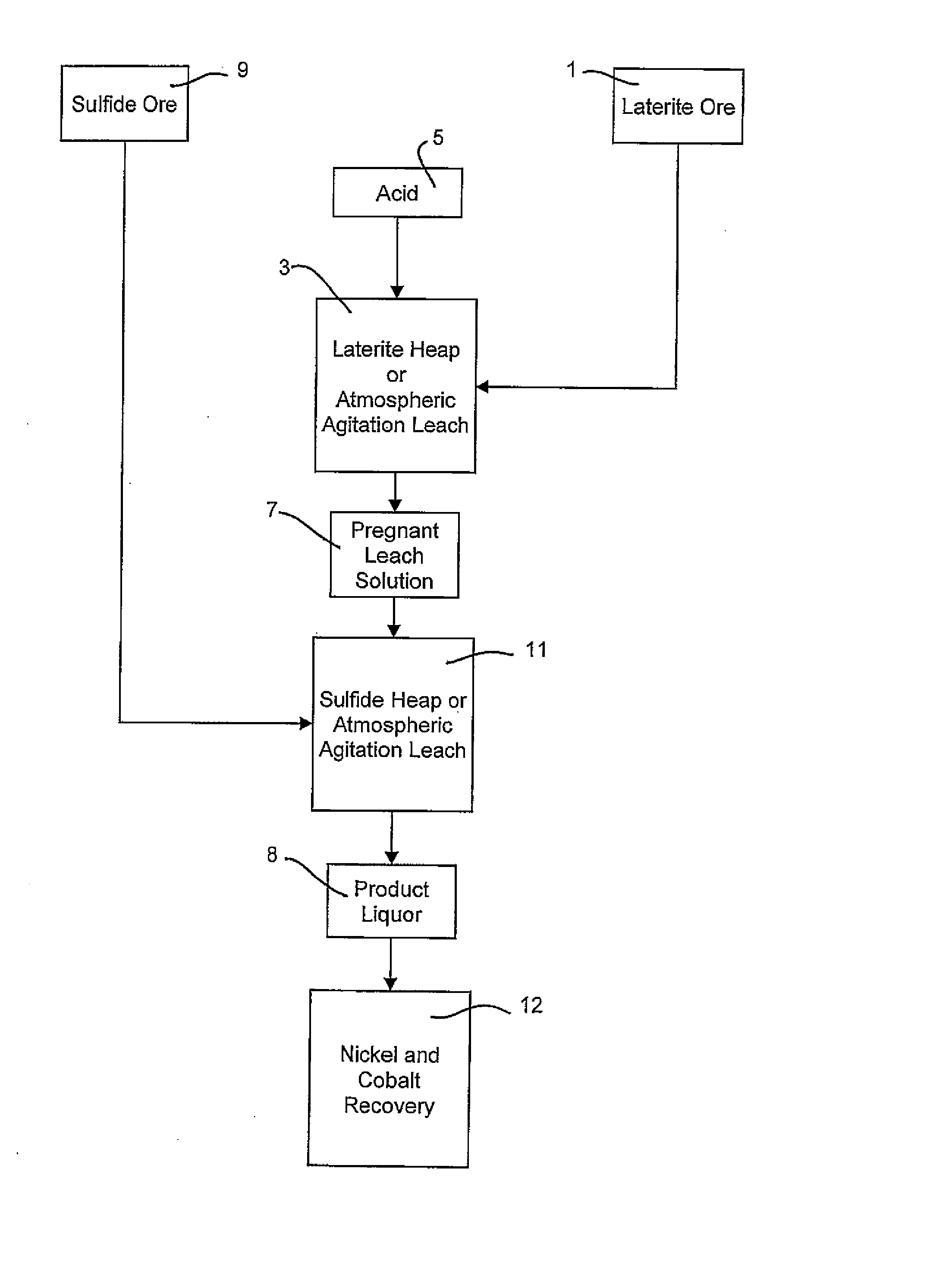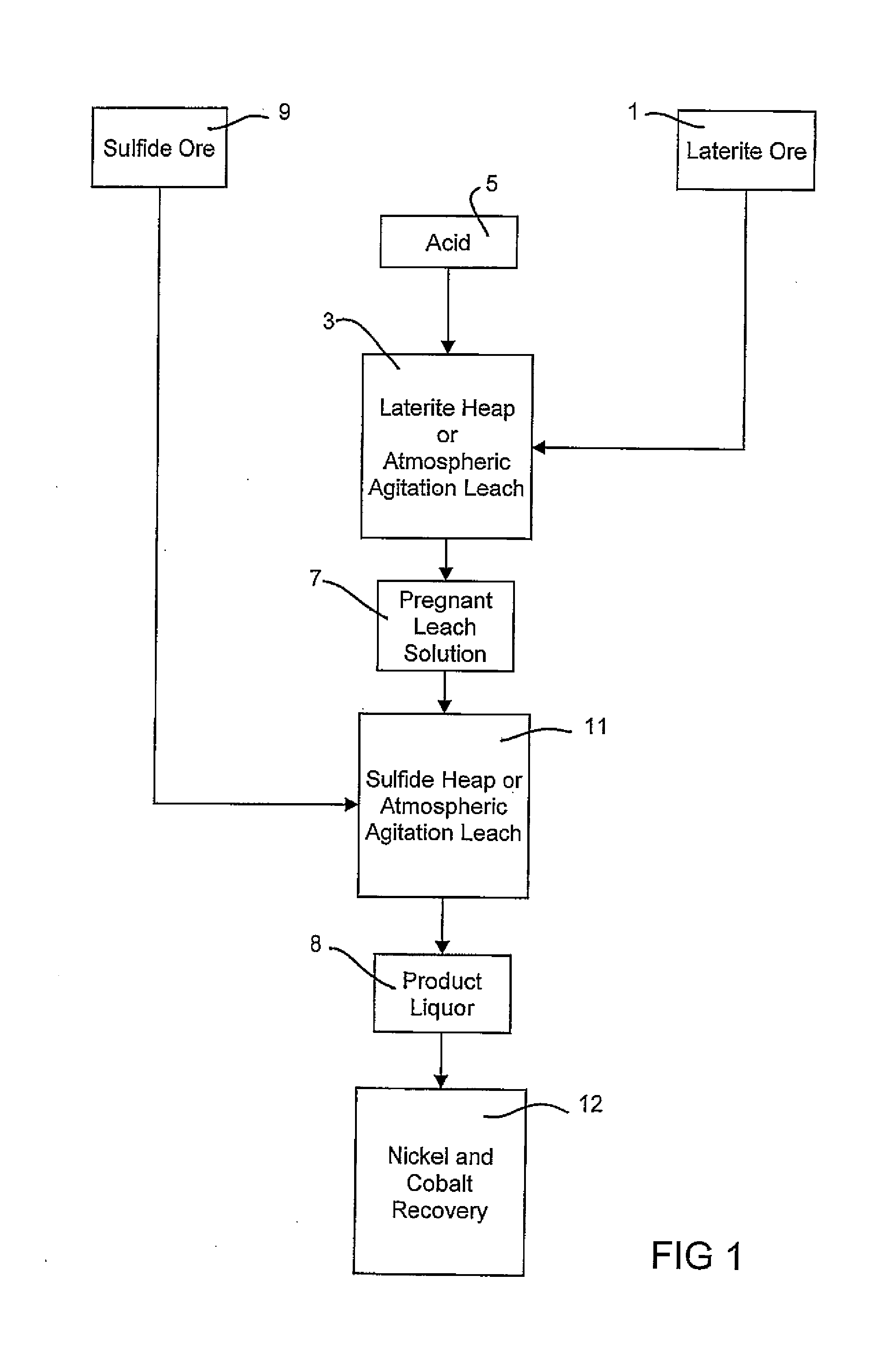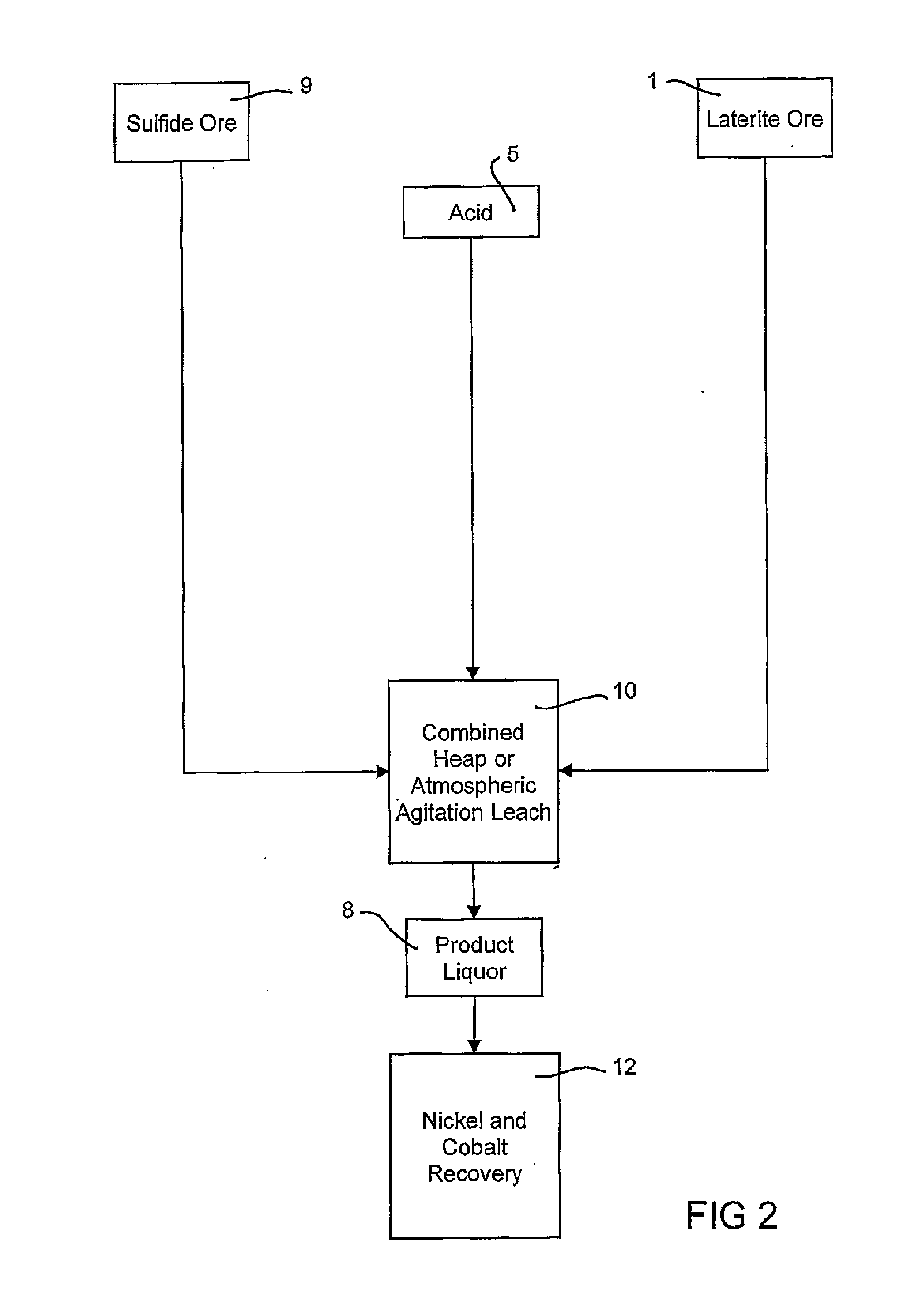Consecutive or Simultaneous Leaching of Nickel and Cobalt Containing Ores
a cobalt-containing ores and cobalt-containing technology, applied in the field of new hydrometallurgical processes, can solve the problems of low efficiency of base metal sulfide smelting process, high loss of cobalt values in slag from smelted nickel ores or concentrates, and process has not achieved commercial success
- Summary
- Abstract
- Description
- Claims
- Application Information
AI Technical Summary
Benefits of technology
Problems solved by technology
Method used
Image
Examples
example 1
Leaching Reactivities of Oxidic and Sulfide Ore With Sulfuric Acid When Leached Individually
[0117] Samples were taken from each of three zones of an ore body, a nickel oxide ore zone, a sulfide ore zone, and a sulfide transition ore zone between the two. The sulfide transition ore was essentially a sulfide ore with a mild degree of oxidation but with almost the same sulfur to nickel ratio as the sulfide zone ore. The composition of the major elements in each zone sample are listed in Table 3. One hundred grams of sample from each zone were ground with particle size of 100% less than 80 micron were leached at 80° C. for six hours with one litre sulfuric acid solution containing 100 g / L H2SO4. 98% H2SO4 was added into the reactor to keep constant acidity. Table 4 lists the weight and composition of leaching residue and Table 5 lists the leaching extractions calculated with residue weight and composition. The results show that the nickel and cobalt extractions declined in the order of...
example 2
Consecutive Agitation Leach of Oxide and Sulfide Ore
[0120] Three hundred grams of oxide ore zone sample described in Example 1 were leached in an agitation reactor with 121 gram 98% sulfuric acid and 600 mL water at 80° C. for three hours. The pregnant leach solution contained 15 g / L total Fe including 14.4 g / L Fe+3. The oxidation and reduction potential (ORP) was 808 mv (SHE). Then 72 grams of sulfide ore zone sample described in Example 1 were added into slurry. The pH was controlled in the range of 0.6-1.5 with adding 98% H2SO4 to prevent ferric ion precipitation. The ORP was in the range of 734 to 748 mv (SHE). The sulfide ore leaching lasted 11 hours. The product liquor contained 16 g / L Fe including 11.6 g / L Fe+3. The overall nickel and cobalt extractions calculated with the composition of feed ore grade and leaching residue were 72.9% and 100% which was higher than the extractions with individual acidic leaches, shown in Table 5.
example 3
Consecutive Agitation Leach of Oxide and Transition Ore
[0121] Three hundred grams of oxide ore zone sample described in Example 1 were leached in an agitation reactor with 134 gram 98% sulfuric acid and 600 mL water at 80° C. for three hours. The pregnant leach solution contained 17 g / L total Fe including 15.8 g / L Fe+3. The ORP was 802 mv (SHE). Then 93 grams of transition ore zone sample described in Example 1 were added into slurry. The pH was controlled in the range of 0.5-1.5 with adding 98% H2SO4 to prevent ferric ions precipitation. The ORP was in the range of 726 to 745 mv (SHE). The transition ore leaching lasted 11 hours. The final product liquor contained 17 g / L total Fe including 11.2 g / L Fe+3. The overall nickel and cobalt extractions calculated with the composition of feed ore and leaching residue were 71.7% and 100% respectively, which was higher than the extractions with individual acidic leaches, shown in Table 5.
PUM
| Property | Measurement | Unit |
|---|---|---|
| temperatures | aaaaa | aaaaa |
| particle size | aaaaa | aaaaa |
| size | aaaaa | aaaaa |
Abstract
Description
Claims
Application Information
 Login to View More
Login to View More - R&D
- Intellectual Property
- Life Sciences
- Materials
- Tech Scout
- Unparalleled Data Quality
- Higher Quality Content
- 60% Fewer Hallucinations
Browse by: Latest US Patents, China's latest patents, Technical Efficacy Thesaurus, Application Domain, Technology Topic, Popular Technical Reports.
© 2025 PatSnap. All rights reserved.Legal|Privacy policy|Modern Slavery Act Transparency Statement|Sitemap|About US| Contact US: help@patsnap.com



